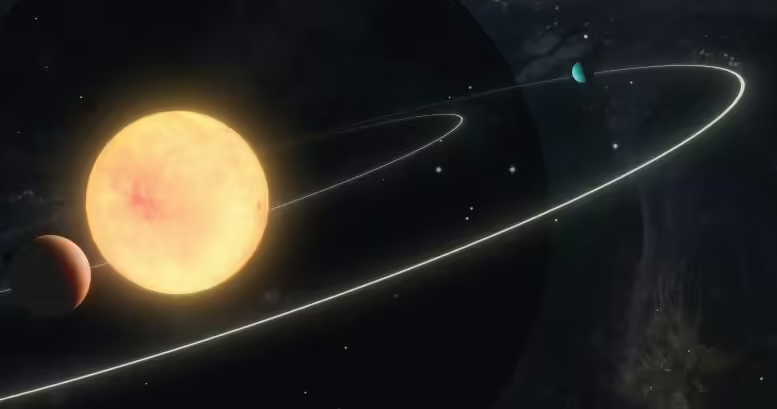NASA’s TESS-Keck survey provides detailed information on the mass and density of 126 planets.
Although thousands of planets have been discovered orbiting other stars, our understanding of them remains limited. NASA’s newly discovered catalog of 126 exotic worlds includes detailed measurements that allow us to compare them to our own solar system.
The catalogue describes a fascinating mix of planetary types outside our solar system, from rare worlds with extreme conditions to those that could possibly host life.
The planets were analyzed by a large international team of scientists using NASA’s Transiting Exoplanet Survey Satellite (TESS) in collaboration with the W. M. Keck Observatory on Maunakea, Hawaii. They are described in the latest issue of the Astrophysical Journal Supplement.
Scientific information about the mass and radius of the exoplanets
“Relatively few of the previously known exoplanets have both mass and radius measurements. The combination of these measurements tells us what the planets might be made of and how they formed,” said Stephen Kane, an astrophysicist at the University of California, Riverside and principal investigator of the TESS-Keck study.
“With this information, we can begin to answer questions about where our solar system fits into the magnificent tapestry of other planetary systems,” Kane said.
The research team spent three years developing the catalogue, analysing more than 13,000 radial velocity (RV) measurements to calculate the masses of 120 confirmed planets, as well as six candidate planets in the northern sky.
Although the planets themselves are invisible, they do have a visible effect. As the planets orbit, they are pulled by their host stars, causing them to “wobble.” As the star moves toward the telescope, its visible light becomes slightly bluer; as it moves away from us, the light becomes slightly redshifted.
This is very similar to the behavior of sound. Due to the Doppler effect, a fire truck’s siren will get louder as it approaches and quieter as it moves away.
Understanding planetary systems through radial velocity
“These RV measurements allow astronomers to detect and study the properties of these exoplanetary systems. “When we see a star oscillating back and forth in a regular manner, we can infer the presence of a rotating planet and measure the mass of the planet,” said Ian Crossfield, an astrophysicist at the University of Kansas and co-author of the catalog.
Some of the planets in the TESS-Keck survey stand out as milestones that will deepen astronomers’ understanding of the various ways planets form and evolve.
A related research paper by UCR graduate student Michelle Hill reports the discovery of two new planets orbiting a star like our Sun. The first is a “sub-Saturn” planet with a mass and radius between those of Neptune and Saturn.
“There’s an ongoing debate about whether planets south of Saturn are truly rare or whether we’re just bad at finding them,” Hill said. “So this planet, TOI-1386 b, is a significant contributor to that planetary demographic.”
TOI-1386 b takes just 26 days to orbit its star, while its neighboring planet, with a mass similar to Saturn’s, takes 227 days to orbit the same star.
Different planet sizes and orbits
Another study, written by UCR graduate student Daria Pidhorodetska, describes a planet about twice the size of Neptune that takes just 19 days to orbit its star, much like our Sun.
“Planets smaller than Neptune but larger than Earth are the most common worlds in our galaxy, but they do not exist in our solar system. Each time a new one is discovered, we are reminded of how diverse our universe is and that our existence in space may be more unique than we can understand,” Pidhorodetska said.
There are many stars that are not like our sun. If scientists want to successfully compare our world to others, they need to find stars that are similar in age, size and mass. “Then we can compare apples to apples,” Kane said. “It’s a fascinating document that Michelle and Daria have created for making this possible.”
The catalogue also details planets that have much more extreme, ultra-short orbits around stars unlike our Sun. One is so close to its orange dwarf that it completes its orbit in less than 12 hours.
“TOI-1798c orbits its star so fast that a year on that planet lasts less than half a day on Earth. Because of their proximity to their host stars, planets like this one are also extremely hot, receiving 3,000 times more radiation than Earth receives from the Sun, said Alex Polanski, a graduate student in physics and astronomy at the University of Kansas and lead author of the paper.
“Existing in such an extreme environment means that this planet has probably lost the atmosphere that it originally formed,” Polanski said.
Ultimately, this new catalogue makes a major contribution to both NASA’s TESS mission and the question of whether other planets could host life as we know it.
“Are we extraordinary? The jury is still out on that question, but our new collected catalogue is an important step toward answering it,” said Kane.













